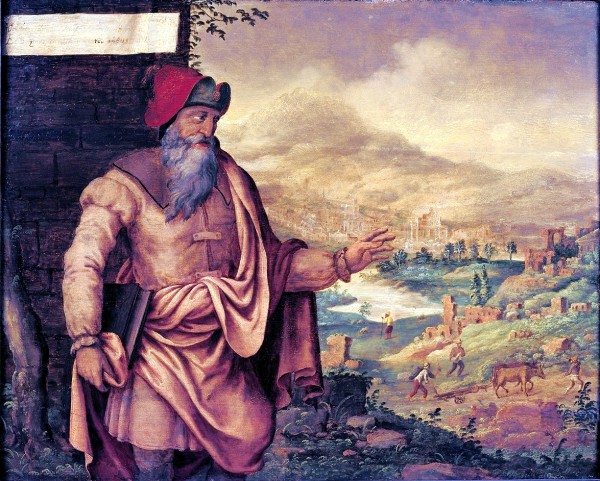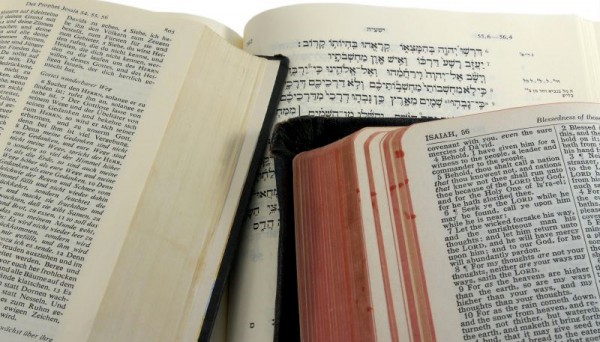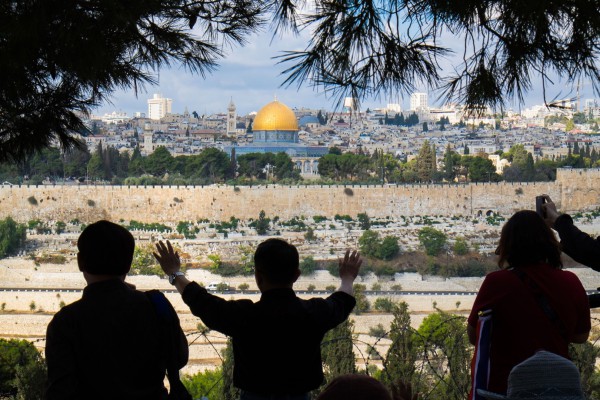
..................................................................................................................................................
The
Day Of The Lord
Are You Ready
for the Day of the Lord?
Bibles For Israel Ministry
“Blow
the trumpet in Zion; sound the alarm on My holy hill. Let all who live in the
land tremble, for the Day of the Lord is coming.” (Joel
2:1)
“The
Day of the Lord is near.” (Zephaniah 1:7)
In these
Last Days, as the love of many grows cold and hedonism, violence, and anti-Semitism continue
to rise, countless Believers are anticipating the soon and unmistakable
appearance of God on the earth to set things straight.
That
appearance will be characterized by His decisive intervention in human history
— a time of judgment and salvation.
This day
of wrath and love at the end of the age is referred to as the Day of
the Lord.
This
phrase, the Day of the Lord (Yom YHVH יוֹם יְהוָה), can be found 18 times in the prophetic books,
most frequently in the books of Joel and Zephaniah, and it is in fact an essential theme
within Bible prophecy.
It also
appears five times in the Brit Chadashah (New Testament).
Here are
a few of those prophecies:
· “See, the Day of the LORD is coming — a cruel day, with wrath and
fierce anger — to make the land desolate and destroy the sinners within it.” (Isaiah 13:9)
· “The sun will be turned to darkness and the moon to blood before the
coming of the great and dreadful Day of the LORD.” (Joel 2:31; see Acts 2:20)
· “The great Day of the LORD is near — near and coming quickly. The cry
on the Day of the LORD is bitter; the Mighty Warrior shouts his battle cry.” (Zephaniah 1:14)
· “Concerning the coming of our Lord Yeshua HaMashiach (Jesus the
Messiah) and our being gathered to Him, we ask you, brothers and sisters, not
to become easily unsettled or alarmed by the teaching allegedly from us —
whether by a prophecy or by word of mouth or by letter — asserting that the day
of the Lord has already come.” (2 Thessalonians 2:1–2)
· For many, the Day of the Lord will be a day of calamity, since it is a
day of destruction for the godless.
· Amos speaks of it as a
day of darkness (Amos 5:18); Joel as a day of clouds and thick darkness (Joel 2:2); Zephaniah as a day of distress and anguish, of
trouble and ruin, of darkness and gloom, of clouds and blackness, a day of
trumpet and battle cry (Zephaniah 1:15–16).
· Isaiah says the
judgment will come suddenly (Isaiah
29:6); but as in the purification of silver, he says
it will ultimately lead to the restoration of righteousness among the people (verse 1:26).
· Isaiah emphasizes that because the earth has been defiled and polluted
by its inhabitants, most will be burned up, while few in the world will
survive (Isaiah 24:6).
· With the ruthless, mockers, and liars destroyed, those who do survive
will know complete peace: spiritually, emotionally, and physically (Isaiah 29:17–24).
“That
Day”
Equivalent
phrases for the Day of the Lord include the following:
· “that day” (see Isaiah 4:2; Micah 2:4; Zechariah 9:16 and others);
· “those days” (Joel 3:1; also in Matthew 24:22 and Mark 13:20 where God cuts short
“those days” for the sake of the elect); and
· “that time” (Jeremiah 31:1; Zephaniah 3:19–20).
In fact,
the time of Jacob’s trouble is referred to using one of these equivalents:
“How awful that day will be! No other will be like it. It will be a
time of trouble for Jacob, but he will be saved out of it.” (Jeremiah 30:7)
These
more general expressions occur more frequently — 208 times in the Tanakh (Old
Testament), about half of the time in the books of the Prophets.
In the
Tanakh, the Day of Lord does not only apply to the end times. It can refer to
any of the following in an imminent or far future sense:
· Future judgment on Israel’s enemies (Isaiah 13; Obadiah 1); and / or
· Future judgment on Israel due to covenantal disobedience, as happened
with the Assyrian and Babylonian invasions and resulting exile (Isaiah 3:18–4:1; Amos 5:18–20); and /
or
· Future deliverance and blessing of Israel and the nations (Isaiah 11:10–12; Joel 3)
One
example of a past fulfillment of that day is the destruction of the Temple in
586 BC, which was described in the Book of Lamentations (2:21) as a “day of the Lord’s anger.”
And
Isaiah describes that day as a time that will involve the fall of Babylon by
the Medes, whom He will bring against Babylon (13:19), an event that occurred in 539 BC.
From
this, we can understand that in some instances, the Day of the Lord has seen
fulfillment, as in the exile and return of the Jewish People to their land —
twice.
As well,
we await its complete fulfillment on the Day of Yeshua HaMashiach.
The Great
Day of Yeshua HaMashiach
“At that time the sign of the Son of Man will appear in heaven, and
all the tribes of the earth will mourn. They will see the Son of Man coming on
the clouds of heaven, with power and great glory. And He will send out His
angels with a loud trumpet call, and they will gather His elect from the four winds,
from one end of the heavens to the other.” (Matthew 24:30–31; see also Daniel 7:13)
The
Prophet Isaiah links “that day” to the coming of the Root of
Jesse. This Root is the Messiah, and Scripture describes the nations as
rallying to Him.
“In that day the Root of Jesse will stand as a banner for the peoples;
the nations will rally to Him, and His resting place will be glorious.” (Isaiah 11:10)
Paul, in
Romans 15, ties this verse to Yeshua.
In the
Brit Chadashah, the Day of the Lord is firmly fixed in His coming and it is
referred to several times as the “day of Yeshua HaMashiach (Jesus the
Messiah)” in 1 Corinthians 1:8, 2 Corinthians 1:14, and
Philippians 1:6, 10. Peter, however, uses the term the day of God (2
Peter 3:10, 12; see also Revelation 16:14).
Nevertheless,
each of these Scriptures clearly refers to the appearance of the Messiah and
His second coming.
The Book
of Isaiah is but one prophetic book to speak about the Day of the Lord.
Zechariah describes the dramatic return of Yeshua as a warrior who will
fight against the nations that invade Jerusalem:
“On that day His feet will stand on the Mount of Olives, east of
Jerusalem, and the Mount of Olives will be split in two from east to west,
forming a great valley, with half of the mountain moving north and half moving
south.” (Zechariah 14:4)
That day
is described as a day of repentance and purification.
“On that day the weeping in Jerusalem will be as great as the weeping
of Hadad Rimmon in the plain of Megiddo.” (Zechariah 12:11)
“On that day a fountain will be opened to the house of David and the
inhabitants of Jerusalem, to cleanse them from sin and impurity.” (Zechariah 13:1)
“On that day, I will banish the names of the idols from the land, and
they will be remembered no more.” (Zechariah 13:2)
Zechariah also describes Israel’s reaction when they see Him: “They
will look on Me, the one they have pierced, and they will mourn for Him as one
mourns for an only child, and grieve bitterly for Him as one grieves for a
firstborn son.” (Zechariah 12:10; see also
Isaiah 53:5; John 19:34–37; Revelation 1:7)
The Great
Day of Decision
“Let the nations be roused; let them advance into the Valley of
Jehoshaphat, for there I will sit to judge all the nations on every side.” (Joel 3:12)
The Day
of the Lord will also be a day of decision in the Valley of Jehoshaphat.
Jehoshaphat (Yehoshaphat in
Hebrew) derives from two Hebrew words: YHVH (Yehovah) and shaphat (judge).
This
Valley of Yehoshaphat, then, is the valley where God
judges the nations. Joel also refers to it as the Valley of
Decision (Joel 3:14).
In this
valley God pronounces judgment on the nations gathered against His people. In
Jehoshaphat, the gathered nations are punished and annihilated.
Time has
run out.
Although
repentance and turning to the Lord is the way for any person to avoid God’s
wrath, in the last days many will not turn from their wicked ways or attacks on
Israel.
They
rebel even though there is a way to salvation:
“Before the coming of the great and dreadful day of the LORD …
everyone who calls on the name of the LORD will be saved.” (Joel 2:31–32)
The apostle Paul says that “concerning the coming of our Lord
Yeshua HaMashiach” those who have made the decision for Yeshua (Jesus)
are going to be “gathered together to Him.” (2 Thessalonians 2:1)
The
apostle Peter confirms that the salvation of a soul is the direct result of
having faith in Yeshua (1 Peter 1:9).
So,
although the nations will be judged for their conduct against Israel, eternal
salvation is a personal decision of every person.
Those who
turn to the Lord will be secure under the reign of King Messiah.
“The LORD will be king over the whole earth. On that day there will be
one LORD, and His name the only name.” On
that day, Jerusalem “will be inhabited; never again will it be
destroyed. Jerusalem will be secure.” (Zechariah
14:9, 11)
End-Time
Deliverance and Blessing for the Remnant of Israel
“In that day the Lord will reach out His hand a second time to reclaim
the surviving remnant of His people … He will raise a banner for the nations
and gather the exiles of Israel; He will assemble the scattered people of Judah
from the four quarters of the earth.” (Isaiah 11:11–12)
Scripture
promises that the Day of the Lord is a day of restoration for the remnant of
Israel.
Although judgment will come “on the day of the Lord’s anger,” the
remnant “will find pasture,” and “He will restore
their fortunes.” (Zephaniah 2:3, 7)
We can understand from Romans 11:26, Revelation 12:17, and other
prophecies that on the Day of the Lord, this saved remnant have been obedient
to the commands of God and “hold to the testimony of Yeshua.”
The Lord
describes the oasis that awaits His remnant:
“In that day the mountains shall drip sweet wine, and the hills shall
flow with milk, and all the streambeds of Judah shall flow with water; and a
fountain shall come forth from the house of the LORD and water the Valley of
Shittim.” (Joel
3:18)
The Lord explains that He does all of this, “so you shall know
that I am the LORD your God, who dwells in Zion, My holy mountain. And
Jerusalem shall be holy, and strangers shall never again pass through it.” (Joel 3:17)
This will
be the day in which evil is defeated and all that has been destroyed by sin
will be transformed.
It will
be the ultimate triumph of God and the exercise of His justice over all — a day
of justice and reward for the godly and ungodly.
What we do
First and foremost, our mission is
ministering to Jewish people with love and comfort.
“Comfort, comfort my
people (Israel), says your God.” Isaiah 40
Located in the Holy Land, the Bibles For
Israel ministry is producing the first-ever Messianic Prophecy Bible.
We educate Jewish people on the prophecies
about the Messiah in the Tanakh (Hebrew Scriptures), showing the truths by
defining the Messianic and rabbinical points of view.
Not only are we creating the free Messianic
Prophecy Bible in print form, we are tirelessly working on the creation of free
Bible software for mobile and computer devices.
This free software will be used by everyone –
from seminary students to Sunday school children in African villages, and
those who are scattered around the four corners of the earth.
Our Bible will reach millions of people in
hundreds of languages, spanning all 257 countries and territories in the world.
We also minister to the spiritual and
financial needs of the elderly, poor, and single parents.
“For out of Zion shall
go forth the Torah and the Word of LORD (YHVH)
from Jerusalem.” Isaiah 2:3
from Jerusalem.” Isaiah 2:3

 |
Jerusalem
|
 |
A woman looks out over Jerusalem.
|
 |
The
Last Judgment, by John Martin
|
 |
Travna fresco of the prophets Isaiah, Jeremiah,
Ezekiel, and Daniel by Leopold Bruckner.
|
 |
The Prophet Isaiah Predicts the Return of the
Jews from Exile, by Maarten van Heemskerck
|
 |
The Book of Isaiah is but one prophetic book to
speak about the Day of the Lord.
|
 |
Believers pray for Jerusalem and the Jewish
People from the Mount of Olives.
|
 |
Today the Valley of Jehoshaphat is called the
Kidron Valley.
|
No comments:
Post a Comment